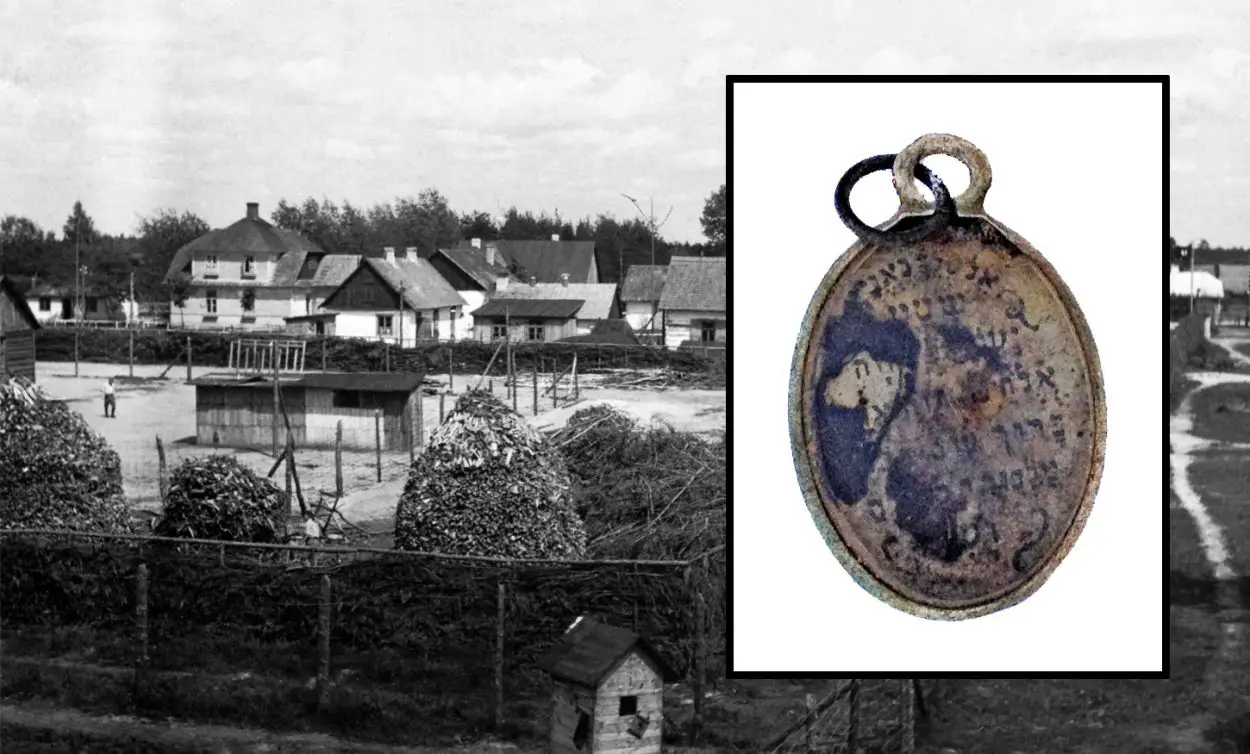Archaeologists have uncovered Shema Yisrael pendants in the areas where victims were forced to undress, before being exterminated in the gas chambers at the Sobibor extermination camp in Poland.
Sobibor was built and operated by Nazi Germany as part of Operation Reinhard in the forests near the village of Sobibór, in the General Government region of German-occupied Poland.
Sobibor existed for the sole purpose of murdering between 170,000 to 250,000 people, who arrived on trains under the illusion that they were at a transit camp.
They were forced to hand over their valuables, were separated by sex and told to undress, where they were then marched along the 100-metre long “Road to Heaven” (Himmelstrasse) to the gas chambers and exterminated using carbon monoxide released from the exhaust pipes of a tank engine.
Archaeological excavations have uncovered three pendants bearing depictions of Moses and the tablets of the Law opposite the Hebrew prayer “Shema Yisrael,” (“Hear O Israel”). The excavations were directed by Wojciech Mazurek from Poland, Yoram Haimi from the Israel Antiquities Authority and Ivar Schute from Holland, who were assisted by local residents.
The metal pendants are different from one another, and they were inscribed by hand. Over the past year, researchers have identified their origin in Eastern Europe: from Lviv in Ukraine, and from Poland and Czechoslovakia.
According to archaeologist Yoram Haimi of the Israel Antiquities Authority, “Little is known about the stories behind the pendants, which are heartbreaking. It has been possible to identify a kind of tradition or fashion among the Jewish communities of Eastern Europe with pendants that were inscribed with “Shema Yisrael” on one side and a depiction of Moses and the tablets of the Law on the opposite side. But were they distributed in synagogues by local Jewish communities or possibly produced for individual orders? Research of the pendants is on-going, and we invite the public to provide us with details concerning them.”
One of the three pendants was discovered in the archaeological excavations in the remains of the building where victims were undressed before being led to the gas chambers: over the floor of the building were scattered dozens of women’s hairpins and jewellery and also a pendant.
Another pendant, on which Latin numbers were inscribed on the tablets of the Law, was uncovered in the area where victims were undressed in Camp II. A third pendant, on which only the side with the inscribed prayer survived, was discovered next to a mass grave.
Eli Eskozido, Director of the Israel Antiquities Authority: “The personal and human aspect of the discovery of these pendants is chilling. They represent a thread running between generations of Jews – actually a thick thread, thousands of years old, of prayer and faith. This moving discovery reminds us once again of the importance of settlement in our land and our obligation to reveal the past, to know it and to learn from it. I congratulate IAA archaeologist Yoram Haimi for his initiative in excavating the extermination camp and making the Holocaust tangible in the face of hatred and Holocaust denial.”
Header Image – Sobibor (adapted) with Shema Yisrael pendant – Credit: Yoram Haimi, Israel Antiquities Authority





